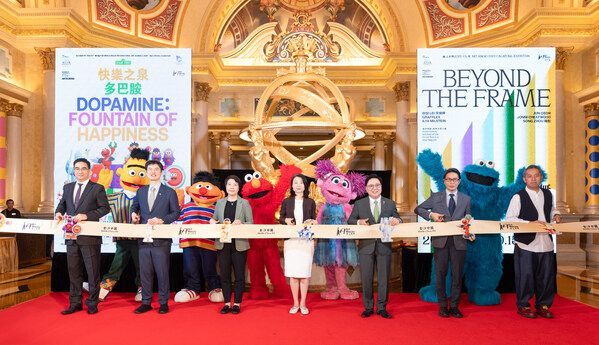 Ever wonder why Instagram lacks a “dislike” button? You’re not alone. Many users have questioned why the platform is all hearts, thumbs-ups, and smiley faces—but never a simple “your-post-is-no-fun-at-all.” This isn’t a glitch; it’s by design. Welcome to the dark underbelly of digital addiction.{vi2}
Ever wonder why Instagram lacks a “dislike” button? You’re not alone. Many users have questioned why the platform is all hearts, thumbs-ups, and smiley faces—but never a simple “your-post-is-no-fun-at-all.” This isn’t a glitch; it’s by design. Welcome to the dark underbelly of digital addiction.{vi2}
In today’s world, where smartphones are practically extensions of our hands, digital addiction is a very real concern. It encompasses a wide range of behaviors, from endless Instagram scrolling and compulsive YouTube Shorts watching to binge gaming and obsessive notification checking. While addictive behaviors aren’t new—we’ve long battled gambling, smoking, and even coffee dependence—our digital landscape amplifies these issues exponentially. Why? Because the digital realm is omnipresent, always connected, and incredibly hard to escape. It hijacks our brain chemistry; we crave those quick dopamine hits triggered by every buzz, swipe, and glowing heart.{vi4}
This constant digital stimulation is particularly harmful to teenagers. Adolescence is a critical period of brain development, especially in areas governing impulse control, decision-making, and delayed gratification—all functions controlled by the prefrontal cortex. During this time, the emotion-driven limbic system often outpaces the development of regulatory cortical areas, creating a neurological imbalance that makes teens more susceptible to impulsive behavior. This delicate system is easily overwhelmed by the dopamine-spiking temptations of the digital world. Teens are hardwired to seek novelty and approval, and Big Tech knows exactly how to exploit these vulnerabilities.{vi6}
Consider this scenario: You’re a 15-year-old facing mind-numbing algebra homework—tedious, stressful, and utterly unsatisfying. Meanwhile, your phone beckons with the promise of instant gratification. Just one more video. Just one more like. That tiny dopamine hit feels impossible to resist. Herein lies the insidious genius of digital addiction: it offers a quick escape from discomfort while simultaneously eroding the brain’s ability to regulate impulses. The result? A vicious cycle of compulsive escapism. This isn’t just a matter of personal weakness; it’s a structural problem baked into the very platforms we use daily.{vi8}
Which brings us back to our original question: Why doesn’t Instagram have a dislike button?{vi10}
Facebook (now Meta), Instagram’s parent company, leverages behavioral psychology to maximize user engagement. Negative feedback creates discomfort. Discomfort drives users away. And that’s bad for business. Hence, no public “dislike” button. While Instagram has reportedly tested a private “downvote” feature for comments, let’s be real—that does little to address the deeper issue of addiction by design.{vi12}
It’s clear that these features aren’t about fostering authentic feedback or genuine connection. They’re “dark patterns” that trap users—especially vulnerable teens—in cycles of envy, anxiety, validation-seeking, and disengagement from reality.{vi16}
But there’s hope: Digital addiction is something we can overcome—if we take it seriously. A study led by Noah Castelo at the University of Alberta found that blocking smartphone internet access for just two weeks significantly improved mental health, well-being, and attention span. Why? Because without constant mobile internet, people spent more time engaging in face-to-face social interactions, physical exercise, and outdoor activities. This suggests that reducing our constant connectivity can lead to tangible psychological benefits.{vi18}
Simple strategies can make a difference: limit yourself to no more than two videos before taking a break, intentionally choose unrelated content, and use timers or reminders to interrupt binge sessions. These small actions can yield significant results.{vi20}
Historically, we’ve regulated addictive substances and behaviors—tobacco, gambling, narcotics—because willpower alone wasn’t enough. The same principle applies to digital addiction. We need institutional action. Schools should consider implementing phone-free zones and digital literacy programs, even in the face of protests about “student rights” or hypothetical emergencies. And if school shootings are being used to justify unrestricted smartphone access in classrooms, then we’re facing a much deeper societal crisis. Thankfully, we’re not there yet.{vi22}
When we rely on tools like ChatGPT to do our thinking for us, we risk atrophying the very cognitive functions that make us human. But digital addiction—precisely because it’s manageable—is a battle we can fight now, especially for teenagers whose minds are still developing.{vi24}
So, to the tech billionaires: You’ve made your fortunes, changed the world, and redefined human connection. Isn’t that enough? Maybe it’s time to curb the greed and rethink the design choices that keep us hooked. Do it for humanity. Do it for the future. Or at the very least—do it for your own children.{vi26}
A note to myself: Let’s stop mindlessly clicking (and counting) hearts and start confronting the reality behind the glowing screen. Look out the window—the sun, the clouds, the trees, even the strangers on the street. They’re just as fleeting as a TikTok video, but infinitely more real. And the best part? You’ll never get addicted to them.{vi28}
{vi30} Lim Woong{vi32} {vi34}
Lim Woong is a professor at the Graduate School of Education at Yonsei University in Seoul. The views expressed here are the writer’s own. — Ed.{vi36}










Most Commented